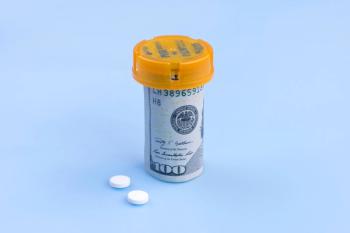
Dead Rx Inventory: An Avoidable Money Pit in Community Pharmacy
Pharmacy inventory represents a controllable expense that should yield a profit if managed correctly. Unfortunately, in the world of community pharmacy, the time between the layout of capital and the realization of profit carries a degree of uncertainty. As a result, community pharmacy, has a cash flow challenge that is often taken advantage of by larger direct competitors with their incestuous relationships to the capital layers of big pharma. A community pharmacy’s inventory, or formulary, is an inherent risk at best and a bad bet at worse.
Let’s explore the inherent risk, or balancing act, of community pharmacy inventory. On one side of the scale is the risk of buying large amounts (units) of inventory with the goal of selling for a profit. The risk is incurred by ownership if these units don’t sell quickly; they will then lose value and increase cost, thereby shrinking profits. On the other side of the scale, there is risk in not carrying enough inventory, since failing to fill a script means losing a patient to a competitor. All too often in community pharmacy, the scale is tipped toward the latter. Community pharmacy staff tend to overbuy, subscribing to the “just in case” philosophy too frequently. The fear of not having enough tends to outweigh the fear of having too much, so inventory increases and more capital is invested with the associated future costs. Here the cash flow problem is exposed, and the biggest challenge is dead Rx inventory, comprising any drug that does not turn over and sell. In a community pharmacy, for the unique cash flow challenges, we can narrow the de nition further. Dead Rx inventory in a community pharmacy involves items and drugs that have not been dispensed in the prior four months. This time frame covers the 90 fills that typically occur in certain programs.
On average in the United States, a community pharmacy has 20-30 percent of its inventory considered dead based on the above narrowed definition. Let’s take an average on-hand amount for a typical U.S. community pharmacy of $200,000. Twenty percent of $200,000 is $40,000 on the low end of the dead Rx average range. That is $40,000 tied up in drugs that have not been dispensed in the prior four months!
Knowing there may be problem — in this case, dead Rx inventory and cash flow — and then actually doing something to fix it takes motivation. Nothing motivates a community pharmacy owner more than shrinking profits, and nothing shrinks profits faster than expenses and costs. In terms of a formulary, there are several incurred cost areas that directly affect the bottom line. Capital cost is the cash tied up in the drugs until it is recouped by selling them. Carry cost is the cost of the item sitting on the shelf and not moving (approximately 2 percent monthly in U.S. community pharmacies). Storage cost is the cash invested in the physical space that the inventory occupies (shelf, bay space in a cabinet or safe, etc.). Administrative costs are those associated with an employee’s time and expense while performing inventory-related tasks. When a pharmacy owner lists these costs, one after another, the opportunity cost of dead inventory is unearthed.
Opportunity cost is capital laid out for a drug that did not move, incurred carry cost, took up space in a safe or cabinet and burdened a tech. You missed the opportunity to further invest in a different or new drug that was proved to be more profitable, avoid carry costs, generate revenue to pay for the space it occupied and not pull a tech away from contact with patients. Dead inventory not only is a cash flow challenge, but it quickly morphs into a time trap.
In summary, if a drug does not sell quickly, it begins a long, slow and expensive march toward Expired Town. Along the way, said drug steals opportunity and time from profitable drugs as well as patients. Resisting the temptation to overinvest in the “just in case” inventory model and moving more toward a “just in time” model, via a perpetual inventory system using a third-party inventory control software interfaced with your pharmacy management system, is the most effective way to manage your Rx inventory and ensure profit. Dead inventory is the result of using less efficient inventory control measures that cripple cash flow and leave a community pharmacy at a competitive disadvantage.
Daniel J.R. Sullivan, serves as vice president of sales and marketing at DatarithmTM.
Newsletter
Pharmacy practice is always changing. Stay ahead of the curve with the Drug Topics newsletter and get the latest drug information, industry trends, and patient care tips.















































































































